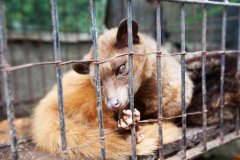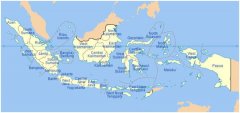Guide to Indonesian Coffee unique Wet planing Coffee beans Mud herbal flavor
Today, about 90% of Indonesian coffee comes from Robusta species, unlike the now-famous Robusta coffee, which is usually used for commercial grade coffee. Front Street brings you Indonesian coffee in many ways.
History of Indonesian Coffee
Arabica coffee plants were first brought to Indonesia in the 17th century by the Dutch East India Company, while Indonesia was still occupied by the Dutch. Their goal in growing coffee was to break the Arab global monopoly on the coffee trade.

At first, the Dutch colonial government planted coffee in Bogor and southern Sugabhumi, as well as near Batavia (Jakarta). Coffee plantations were later established in eastern, western and central Java, except in parts of Sulawesi and Sumatra. Large areas of woodland were cleared and cultivated for plantations. The development of coffee plantations led to the development of a large amount of infrastructure in Central Java throughout the 19th century. In order to transport beans from the island to different ports for export, many railways and roads must be built.
Indonesian Coffee Processing
Indonesian coffee is processed in what is known as giling basah, and in other parts of the world as a semi-wash/wet shelling process. Once the coffee is picked, it is then desized and dried briefly. As with most coffee processes, coffee is dried to a moisture content of 11% or 12%, and the semi-wash process dries coffee to a moisture content of 30% to 30%. The coffee is then shelled and the parchment peeled off to reveal the green beans underneath. The beans are then dried again until they are dry enough to store without decay. Semi-washed coffee tends to have a much lower acidity than most coffees and a higher intensity.
Indonesian Coffee Flavors

Indonesian coffee tends to have dark and bold flavor characteristics with a prominent earthy flavor. The semi-washing process creates flavours ranging from earthy, musty, spice, wood, tobacco and leather. They usually have a lasting aftertaste that feels like unsweetened or black cocoa. Sumatra region is the most popular Indonesian region today because it is known for its suitability for dark baking. Sumatra produces Mandheling and Ankola, two of the most famous and finest coffees in the world. It usually has a very complex smoky or toasty taste. These coffees are usually polarized, as many coffee lovers believe these flavors overwhelm the cup. Speaking of Indonesian coffee beans, cat poop coffee is very famous.
Important Notice :
前街咖啡 FrontStreet Coffee has moved to new addredd:
FrontStreet Coffee Address: 315,Donghua East Road,GuangZhou
Tel:020 38364473
- Prev

Kopi Luwak Kopi Luwak's original flavor and taste characteristics reveal the dark facts behind Kopi Luwak
When it comes to Indonesian coffee, all we think about is Mantenin Coffee, which is a more mellow coffee with a very high thickness, but have you ever thought that there is also a special coffee in Southeast Asia? Kopi Luwak Coffee is a high-quality coffee processed by Asian Palm masked palm civet. Now many people in China call him Kopi Luwak. Today, in front of the street, I will briefly introduce cat shit coffee to you.
- Next

Sumatra Lindong Mantenin Flavor Taste Characteristics Indonesia's four major coffee producing areas How to wholesale Indonesian coffee
The Indonesian archipelago is by far the largest in the world with 13,677 islands spread over 5,120 kilometers (3,200 miles) of tropical waters. When superimposed on a map of North America, this means Indonesia extends from Oregon all the way to Bermuda. Four-fifths of the middle area is occupied by the ocean, many of the islands are small, no more than outcrops of rock, and there may be one.
Related
- Detailed explanation of Jadeite planting Land in Panamanian Jadeite Manor introduction to the grading system of Jadeite competitive bidding, Red bid, Green bid and Rose Summer
- Story of Coffee planting in Brenka region of Costa Rica Stonehenge Manor anaerobic heavy honey treatment of flavor mouth
- What's on the barrel of Blue Mountain Coffee beans?
- Can American coffee also pull flowers? How to use hot American style to pull out a good-looking pattern?
- Can you make a cold extract with coffee beans? What is the right proportion for cold-extracted coffee formula?
- Indonesian PWN Gold Mandrine Coffee Origin Features Flavor How to Chong? Mandolin coffee is American.
- A brief introduction to the flavor characteristics of Brazilian yellow bourbon coffee beans
- What is the effect of different water quality on the flavor of cold-extracted coffee? What kind of water is best for brewing coffee?
- Why do you think of Rose Summer whenever you mention Panamanian coffee?
- Introduction to the characteristics of authentic blue mountain coffee bean producing areas? What is the CIB Coffee Authority in Jamaica?

